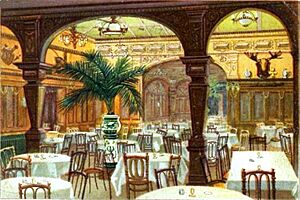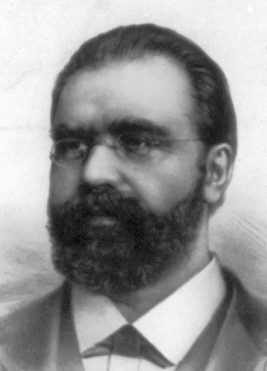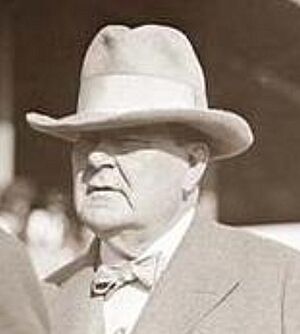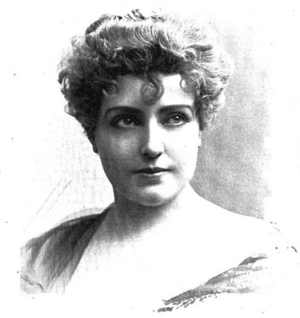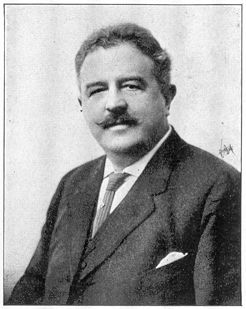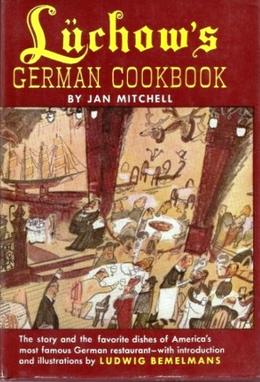Lüchow's facts for kids
Lüchow's was a famous German restaurant in New York City. It was located at 110 East 14th Street in the East Village neighborhood, near Union Square. The restaurant was so big it stretched all the way through the block to 13th Street!
Lüchow's first opened in 1882. A German immigrant named August Lüchow bought the cafe where he worked as a bartender. The area around the restaurant was mostly homes back then. Lüchow's stayed open for 100 years in the same spot. It became a favorite place for people in the entertainment world. This was because it was close to the Academy of Music, which was the city's opera house. Steinway Hall and Tammany Hall, where other shows happened, were also nearby.
Even though a writer once said "nothing changes at Lüchow's," the restaurant eventually closed. It tried to move to the Theater District in 1982 to get more customers, but this didn't work out. That new location closed in 1984, and its smaller branches closed in 1986. The original building on 14th Street was badly damaged by a fire in 1994 and was torn down in 1995.
Contents
How to Say Lüchow's
The name Lüchow is German. In German, the "w" is silent. Most people in America said it like "LOO-chowz." This is an American way of saying it.
For a while, between 1917 and 1950, the two dots over the "u" (called an umlaut) were left out. This caused some funny problems! The New York Times newspaper said that without the umlaut, many new customers thought it was a Chinese restaurant.
The Story of Lüchow's
Through the doors of Luchow's pass all the famous people of the world.
How it Started
August Guido Lüchow came to the United States from Hanover, Germany, in 1879. He was 23 years old. He worked as a waiter and then as a bartender at a cafe owned by Baron von Mehlbach.
Three years later, when he was 26, August bought the business. He got a loan of $1500 from William Steinway. Steinway was a famous piano maker. His concert hall, Steinway Hall, was right across the street. Steinway was a regular customer at the cafe.
At first, the restaurant was much smaller. It didn't even reach 13th Street yet. In those days, 14th Street was a very fancy part of New York City. August Lüchow's new restaurant quickly became known as "the capital of 14th Street."
William Steinway and his friends, many of whom were European musicians, were Lüchow's first main customers. A newspaper article from 1906 mentioned a six-hour farewell party at Lüchow's for the pianist Ignacy Jan Paderewski. Another writer, James Huneker, wrote in 1919 about bringing the composer Antonín Dvořák to Lüchow's. He said, "For a musician not to be seen at Lüchow's argued that he was unknown." This shows how important the restaurant was for musicians.
How it Grew
By 1885, Lüchow started selling special German beers like Würzburger Beer and Pilsner. The restaurant needed more space. So, they built stables on a new lot that went all the way to 13th Street. These stables helped them deliver beer all over the city.
In 1902, they built more rooms. They turned the stables and other areas into three fancy rooms with dark wood. Two of these rooms had very high ceilings (30 feet!) and beautiful stained-glass skylights. These rooms were called the "Heidelberg Room," the "Garden" (because it used to be a beer garden), and the "Cafe."
In 1910, Lüchow's bought another property. This allowed them to add two more public rooms: the Hunting Room and the Nibelungen Room. The restaurant even had a smaller version at the 1901 Pan-American Exposition in Buffalo, NY.
The Heidelberg Room had a huge painting called The Potato Gatherers by Swedish artist August Hagborg. August Lüchow bought this painting at the St. Louis World's Fair in 1904. The painting was still there in 1980. The room also had a very large model of a four-masted ship called the Great Republic. Many mounted animal heads and colorful German beer steins were displayed throughout the room. The Hunting Room was especially full of taxidermy (stuffed animals). It had big tables for large groups of guests.
The "Diamond Jim Brady Room" was decorated in the Art Nouveau style. It had fancy wood, Tiffany glass, and big mirrors. It was named after Diamond Jim Brady. He was a very famous eater who loved fancy jewelry. He was a successful businessman, not a gangster. Brady often ate with the famous actress Lillian Russell. Another room at Lüchow's was named after her.
Later Years
August Lüchow passed away in 1923. His nephew-in-law, Victor Eckstein, took over the business. This was during Prohibition (1921-1933), when alcohol was illegal. The restaurant had to rely on its food and traditions to survive. When Prohibition ended in 1933, Lüchow's was the first place in New York City to get a license to sell alcohol again.
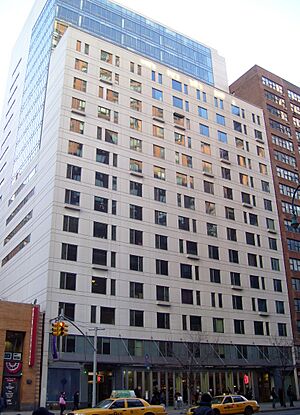
In 1950, a businessman named Jan Mitchell bought the restaurant. He brought back the umlaut (the two dots) in "Lüchow's." Mitchell also brought back fun, week-long festivals. These included a Venison (deer meat) Festival and a Bock Beer Festival. One of the biggest attractions was the nightly lighting of the Christmas tree. This started around Thanksgiving and lasted until New Year's.
Later, Lüchow's was owned by a large restaurant company called Restaurant Associates. The quality of the food and service had declined over time. However, after some renovations in 1979, the restaurant seemed to come back to life for a few years. It was said that they served "1500 covers" (meals) in one day many times.
The End of Lüchow's
By the 1980s, the area around Union Square had become less appealing. The park was run-down. The old opera house and other entertainment venues had been torn down. A large department store across the street closed. The movie theater next door became a rock concert venue. There wasn't much left to attract Lüchow's usual customers.
So, in 1982–83, the 14th Street location closed. The restaurant's items were sold off. The business moved to 51st Street and Broadway, hoping to attract people from the Theater District. The umlaut was removed again.
The Theater District restaurant only lasted a few years. Lüchow's also had smaller locations, like one in Penn Station.
After Lüchow's left 14th Street, the building was used for other things, including a restaurant-discotheque and a gay bar. People tried to protect the building as a landmark, but it never happened. A fire in 1992 destroyed much of the inside. The building was finally torn down in 1995. Today, a New York University dormitory and shopping complex called University Hall stands on the site.
Music at Lüchow's
Around 1900, Lüchow's was doing very well, partly because of its beer sales. August Lüchow helped make imported German beers popular in America. A famous songwriter named Harry Von Tilzer even wrote a song about the restaurant called "Down Where the Würzburger Flows."
Victor Herbert was a famous cellist, conductor, and composer. He brought an eight-piece orchestra from Vienna to play at Lüchow's. He led this orchestra for almost four years, starting a musical tradition that lasted until the 1980s. There was even a special "Victor Herbert Corner" at the restaurant. This is where Herbert and his friends founded the American Society of Composers, Authors and Publishers (ASCAP) in 1914. ASCAP helps protect the rights of composers and authors. Songwriter Gus Kahn also wrote the lyrics for his famous song "Yes, Sir, That's My Baby" at Lüchow's.
Other music played at Lüchow's included songs by Richard Strauss and Johannes Brahms. They also had a fun "Oompah Band" called the Royal Bavarians. This band played lively songs like "Lili Marleen" and "The Beer Barrel Polka."
The music of Franz Lehár, like the "Merry Widow Waltz," added to the cozy and comfortable feeling of the restaurant. Other classical pieces, like The Tales of Hoffmann and Hansel and Gretel, were also part of the music played by the restaurant's piano and string groups. During the Christmas season, they played songs from Herbert's Babes in Toyland and The Nutcracker, along with many popular Christmas carols.
What Was on the Menu?
Lüchow's served German food throughout its history. Some popular dishes included Wiener Schnitzel (breaded cutlets) and different types of wild game. Knackwurst and Sauerkraut, Bratwurst, red cabbage, beets, Sauerbraten (marinated roast beef), and pumpernickel bread were always on the menu.
For dessert, favorites included Pfannkuchen mit Preiselbeeren (thin pancakes with lingonberry sauce) and Sachertorte. Sachertorte is a famous chocolate cake recipe from the Sacher Hotel in Vienna.
During World War I, there was a lot of anti-German feeling. Because of this, August Lüchow decided to remove the umlaut from the name "Lüchow's" in 1917. This was to avoid problems.
Famous Guests
Many famous people visited Lüchow's over the years. Here are some of them:
|
|
Lüchow's in Books
Lüchow's is mentioned in many books, both true stories and fiction. Some of these include La Bonne Table (1964) by Ludwig Bemelmans and Looking for Mr. Goodbar (1975) by Judith Rossner.
Writer H. L. Mencken once wrote about meeting a friend at Lüchow's in 1920. He was surprised his friend was drinking tea there, saying, "Tea in Lüchow's, the citadel of Pilsner!" This shows how famous the restaurant was for its beer.
|


